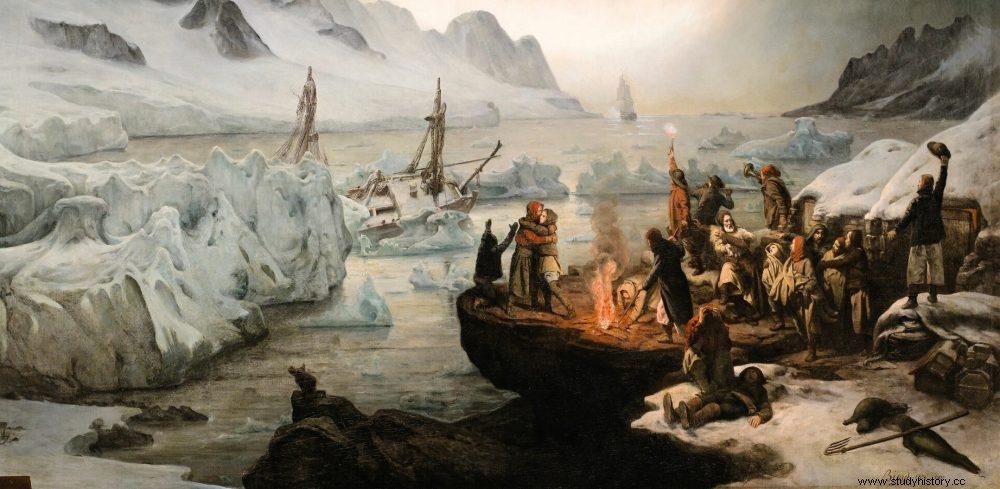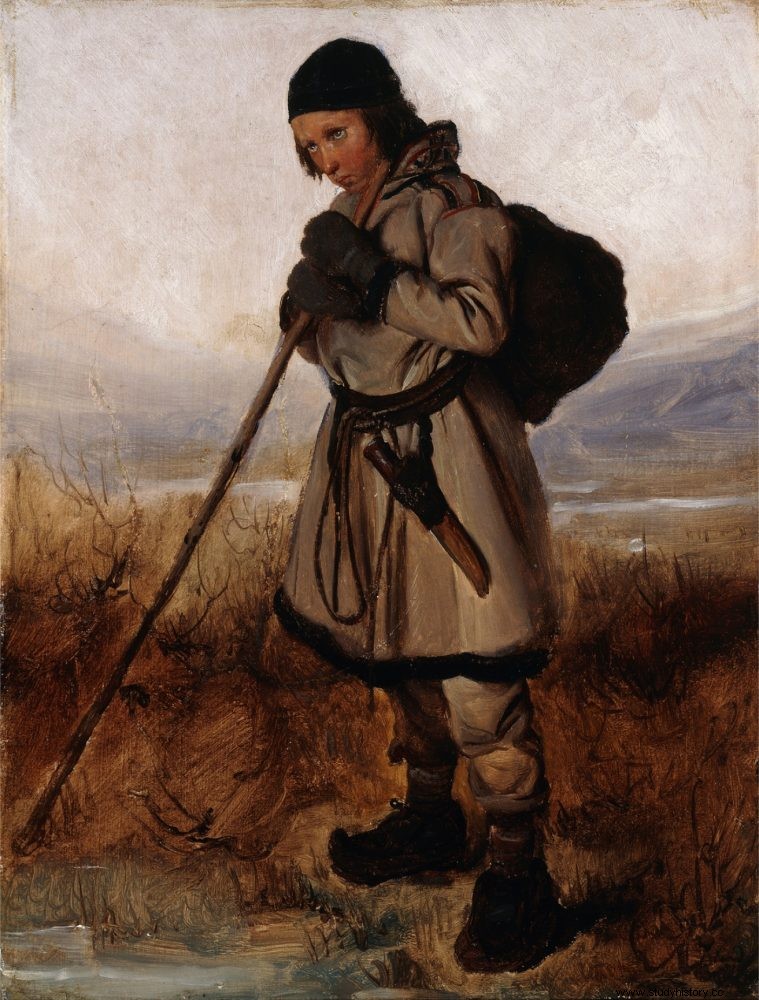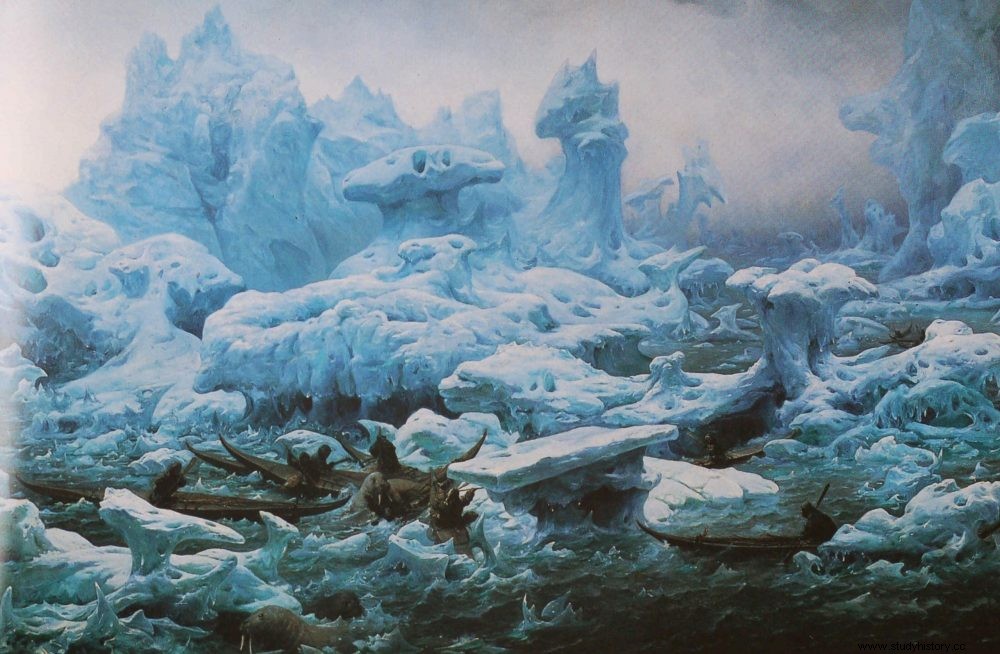
The breath of July had cooled the glaciers of Spitsbergen, and torn from the bay of La Madeleine, like shreds of continent, the ice accumulated by nine months of winter.
Like floating islands whose shores would have had mountains of crystal, these ices covered the sea in the distance, dazzling in their immaculate splendor. Under the reverberation of the slanting sun, their masses, half submerged, resembled rocks of precious stones, where all the delicate and vivid shades united without blending, in the most radiant brilliance. (p.382)
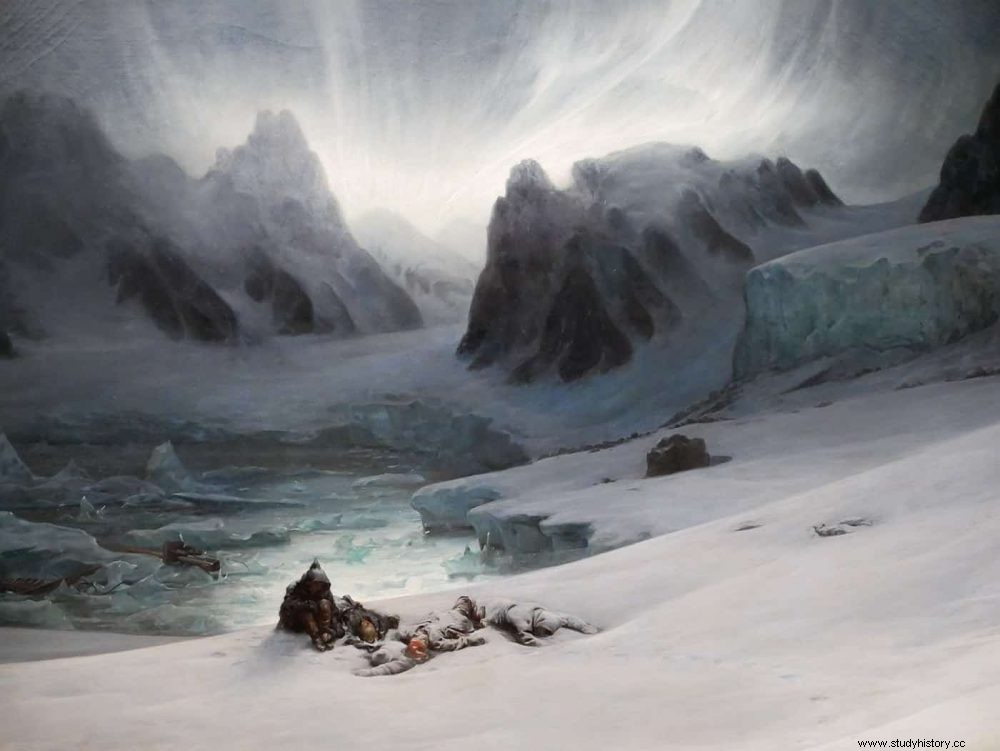
While the waves undermined their bases softened by the heat, more intense as they drift towards the south, these great masses changed every moment in form and appearance, and incessantly varied the styles of their crumbling architecture; the needles, the columns, the pyramids, the gigantic pediments, the colossal arcades, appeared for a moment and soon fell back into the abyss.
All bristling with their sharp fragments, the sea pressed them against each other and pushed them to the shore, where they broke with a crash of thunder, followed by hoarse bellows.
It was a terrible but sublime sight. (p.382)
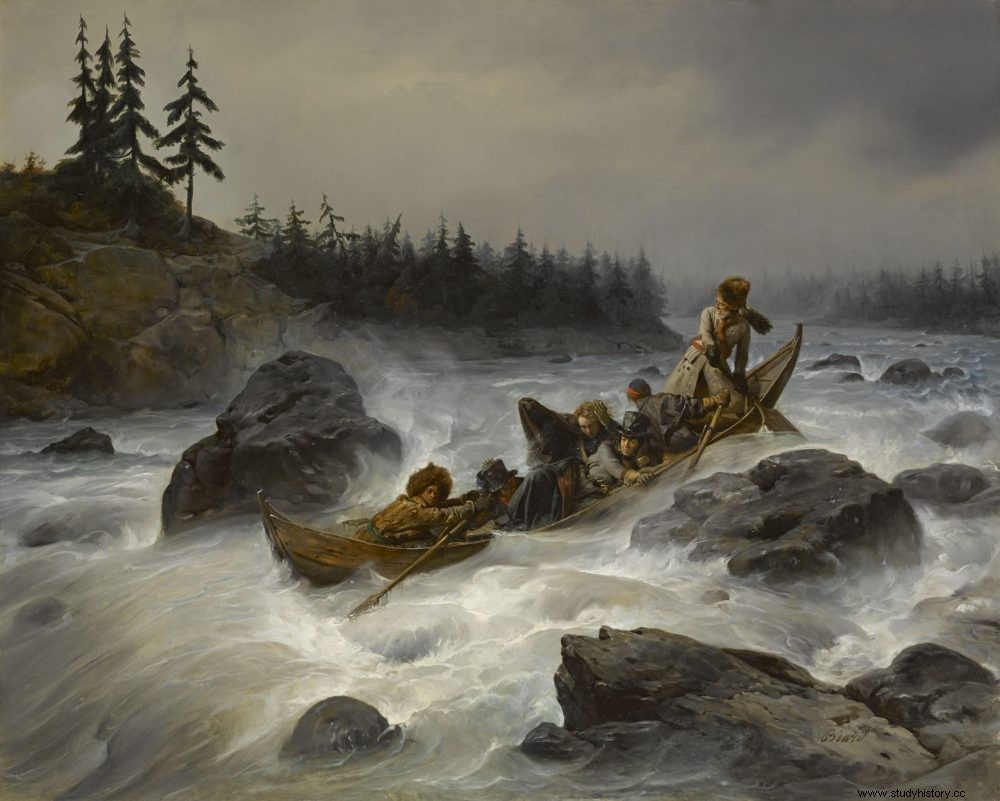
Nothing in our Europe could give a just and true idea of the aridity and the desolation of these landscapes of the North, whose abrupt, violent lines, harshly arrested, do not even have, to soften the formidable severity of their aspects , this abundant and serene light which, under other latitudes, compensates, by dint of brilliance, the roughness and asperity of the forms. (p.324)
Sometimes these islands are isolated like reefs in the middle of the waves; sometimes they are so close together and so close together that they form a second shore opposite the first; sometimes the boat enters an enclosure of rocks which curve around them like the basin on the one hand in the open sea; sometimes they are long walls, parallel at their bases, overhanging at their summit, and which meet above your heads like gigantic triumphal arches. (p.324)
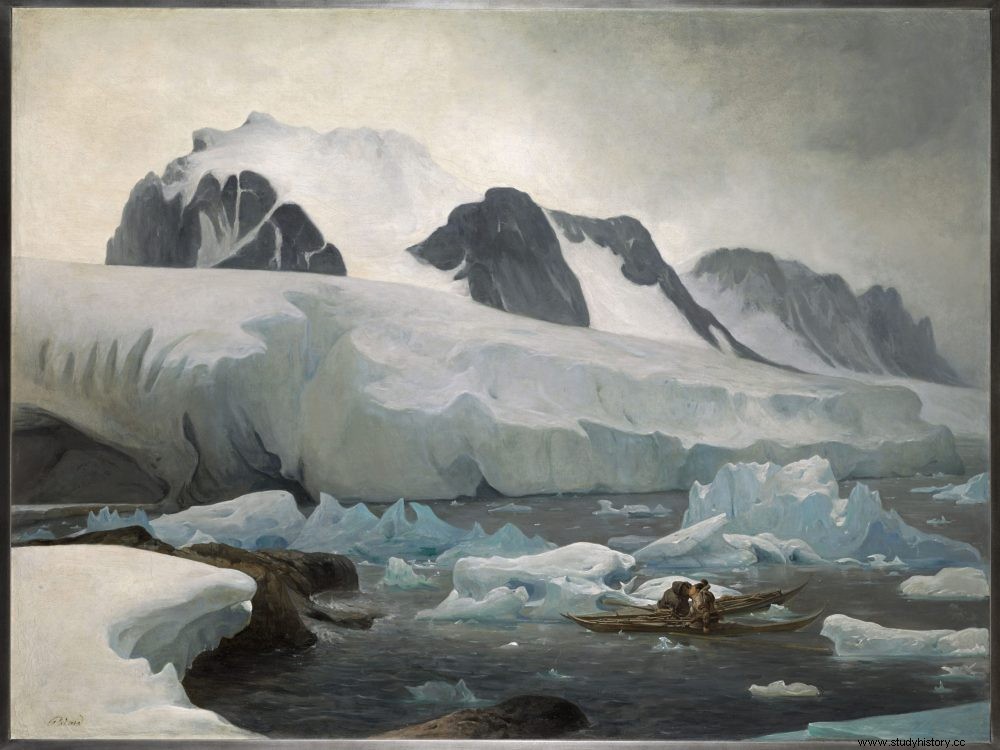
On fishing boats, he went from one island to another, writing, drawing, always working. […] It is sometimes found, in fact, among the Lapps intrepid sailors, who navigate the coasts; worthy rivals of those kings of the sea who discovered the new world, with their skiffs without bridges and without compasses, four centuries before the immortal Genoese. With miserable boats, which we would not want to sail on our lakes, they brush day and night the most formidable reefs, and face the most terrible storms. (p.326)
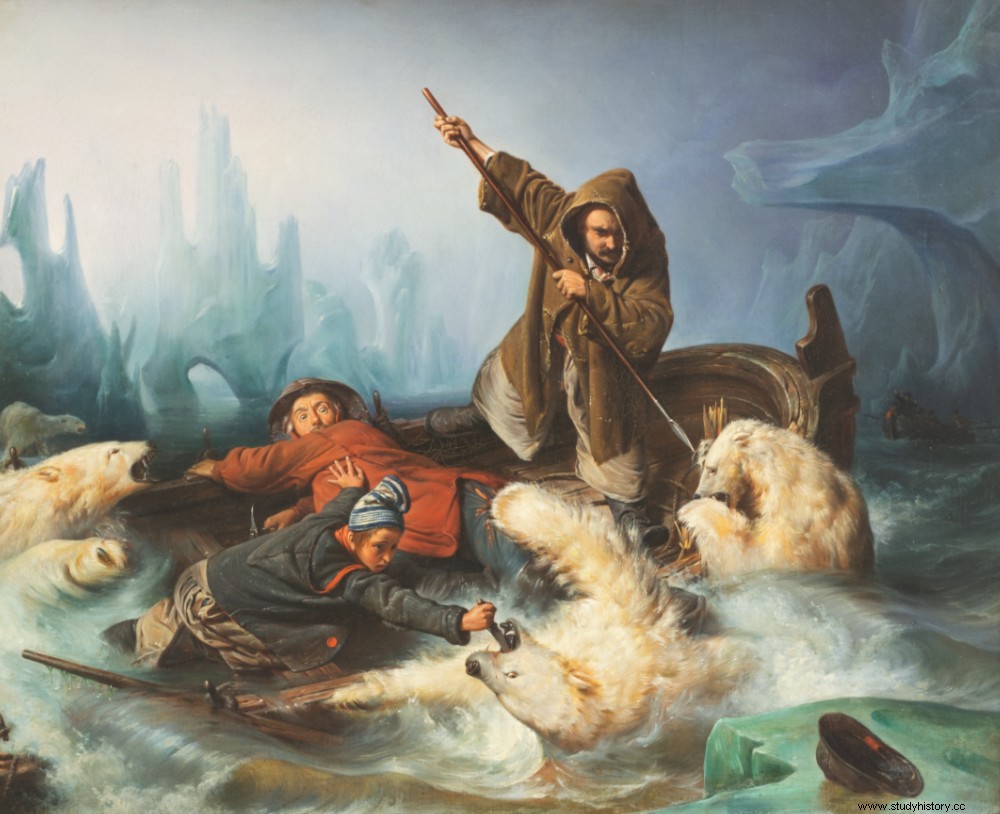
In spite of his great age, he organized bear hunts, to which he led the young people, and still directed his numerous fisheries which brought him rather handsome profits, when the Finnish merchants arrived in his neighborhood with their provisions of flour and fermented liquors. (p.53)
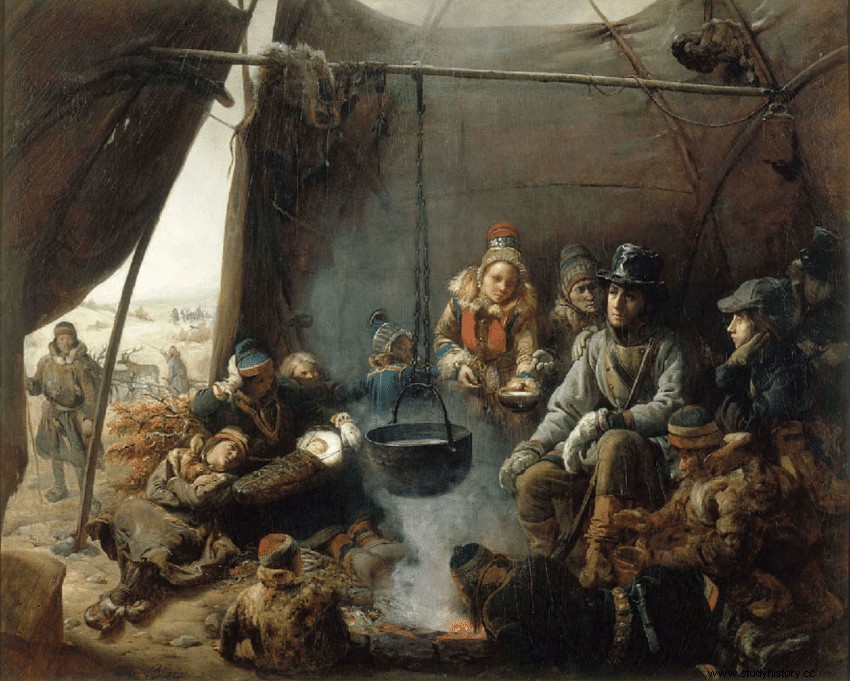
These tents had neither the dimensions nor the richness of those which the traveler sometimes encounters in the sandy deserts of the Orient:they were small, simple in shape, dull in color. It was clear that they had required neither a lot of materials nor a lot of art. All that was needed for their construction were seven or eight poles planted in a circle, joined in a bundle at their ends, and held together by twisted leather ties and pegs, which served at the same time to attach the draperies of the attempted. (p.6)
Sources and references:
All the excerpts presented come from the story “Un amour en Laponie” by the novelist Louis Énault (1824-1900).
Text available in its entirety on Gallica.
The illustrations are by the French painter François-Auguste Biard (1799-1882)

